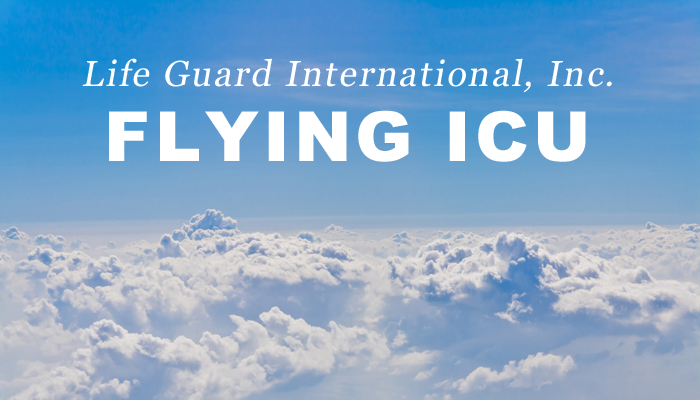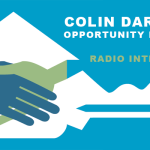
Flying ICU President Donna G Miller • May 2 Radio Interview
This post may contain affiliate links or Google Ads and we may earn a small commission when you click on the links at no additional cost to you. As an Amazon Affiliate, we earn from qualifying purchases. This is at no additional cost to you and helps with our website expenses.
DONNA – Flying ICU: Let me just say, like you said it takes time and it takes an ocean, it’s not just me, it’s my team. My team is pretty much everybody that works with me. It’s my nurses, my paramedics, the pilots, the hospitals and really, the entire medical community here.
I am originally from Romania, and I always wanted to be a pilot, I wanted to fly but I never ended up being a pilot. Somehow, I ended up being a nurse and I am happy about that. In 2002 I decided to – I was working for a different company as a flight nurse and I decided that, “I can do this! I can do it better because I am a nurse”.
There’s not many air-ambulance companies out there that are driven by nurses. Usually, they’re aviation driven. I didn’t have a clue what I was getting myself into, but here we are, ten years, well, more than ten years later. Looking back, we really can count a lot of great accomplishments.
In air-ambulance, what we basically do, we transform aircraft into a flying intensive-care unit. We transport patients that require higher level of care, so the care that they require is not where they are at.
It could be a very challenging patient in a regular hospital, in a stable environment, that now needs to go somewhere else. Heart-transplant patient is a good example. We don’t do transplants in Nevada.
Someone who is on a balloon pump, for example, which is like an outside heart, if you wish, will have to be transported from a local hospital to perhaps in the LA.
This patient that is a challenge enough in a hospital and is been taken care of by a team of professionals, now has to be transported from the hospital bed to the ground ambulance to the air-ambulance and then again at the destination, going back to the ground ambulance and back to the hospital.
Well, not only you are adding stress to this patient that is already possibly very unstable but you are decreasing the expertise. You only have a nurse and a medic on that aircraft that has to be able to not only to continue the care that was given to this patient in the hospital but also they have to be prepared to address any changes in the patient’s condition that were not necessarily anticipated. It is a life and death. Sorry.
LEONARD: We’re speaking with Donna Miller from Flying ICU. 731-1230 at Kelly V 1230 AM.
I’m telling you, Donna, I am inspired. When I went over to your facility, I admire what you’ve done because you just kind of take it for granted that it’s the government that gets people from point A to point B and that they’ve got some sort of paramedic helicopter that will get you there.
But it doesn’t seem like that really what’s going on. It’s private enterprise that’s making sure that people live.
DONNA – Flying ICU: It is a private enterprise. We basically started with a line of credit against our homes and we’ve developed relationships, just like you were saying earlier, Nevada State Bank has been one of our greatest relationships because they try to understand what we do and they were able to provide us with financial back-up on three of our airplanes, actually.
LEONARD: It’s amazing. If you want to call in at (731)123-0702 and if you are outside of the area code it’s (866)820-5528. Strokes. I had a stroke in Pahrump, that could be – not Pahrump, Tonopah. That could be a bit of a problem, right?
DONNA – Flying ICU: Absolutely! When you have a stroke patient it takes a certain amount of time and that is a three hour window that that patient requires certain medication to be administered. If you live on the outskirts of Pahrump, it may take the ground ambulance in the right county to probably get to you, probably half an hour.
By the time you get to the hospital, you’re already one hour into your stroke. Having an aircraft there, it’s definitely….it could have the potential between making the difference between life and death because now, you really have to put this patient in an airplane and take them to Las Vegas.
If we were to not be there locally, it would take an airplane coming from Reno or Vegas about two hours, so you would be outside that three hour window.
FRANK: You’re trying to get a plane up there, right?
DONNA – Flying ICU: Actually, we have been in there since 2009. We have a 24-7 there. We have an aircraft and medical and aviation people on standby 24-7.
FRANK: Wow. I like it, I like it.
LEONARD: This is some amazing stuff.
FRANK: I know. I like it. It’s good.
LEONARD: You’re our inaugural guest forever.
FRANK: I know. I like it, Donna.
LEONARD: Forever in the halls…
FRANK: You’re in the hall of fame!
[APPLAUSE]
FRANK: I like it!
DONNA – Flying ICU: Thank you for inviting me.
[MUSIC: STEVE MILLER BAND – FLY LIKE AN EAGLE]
LEONARD: Well, I’ll tell you, I was so inspired when I went there I gave Frank a call. I said, Frank, we have to have Donna on because she’s just an amazing lady.
FRANK: I’ll tell ya, I like it.
LEONARD: Here’s the thing is, she’s a nurse and she created an aircraft company [Flying ICU].
FRANK: Hey, I like the energy, man. That’s why we had to have her on board to have as a first guest.
DONNA – Flying ICU: When you need a dose of energy, just come on over and…
FRANK: I’ve been there. I’ve been over there. I was doing it, man. I can’t wait to see the new jet.
LEONARD: Just take it up for a spin. Just fly like an eagle.
DONNA – Flying ICU: It’s here. It should start flying patients in about a couple…well, in a couple of days actually.
FRANK: Okay. Cool.
LEONARD: What an amazing interview. You don’t want to touch that dial. You don’t want to touch that mouse. Stay at your computer if you’re listening n the computer but we got Colin Darrow, Opportunity Realty coming up right after the break. You won’t want to miss it. Frank Spady!
For more information about Flying ICU click here.




